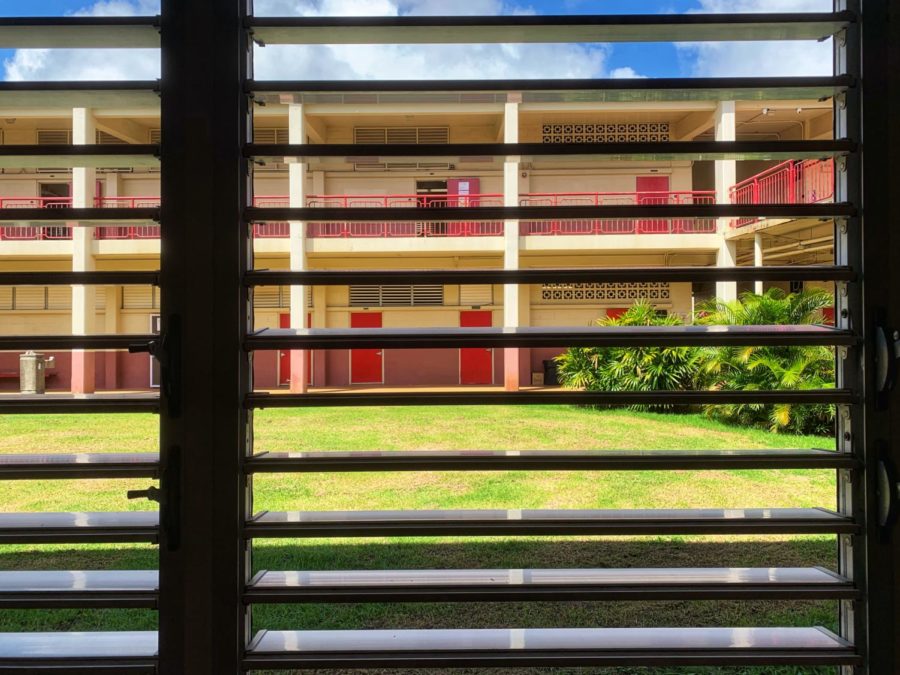Kalani High School: A Step Closer to Air Conditioners
Classes at Kalani sat mostly empty through the first semester of the 2020-2021 school year. All Hawaii Department of Education students returned to full in-person learning in August 2021. Ka Leo staff photo.
October 2, 2019
Air-conditioned buildings become a tangible future for Kalani High School after the Department of Education switches their perspective on cooling Hawaii’s sweltering schools.
After realizing that window-unit air-conditioners are cheaper and more energy-efficient than the presently installed photovoltaic AC’s, the DOE began ordering window-unit systems from different sources. Consequently, each unit has different prices and efficiency levels, and therefore varying problems for the DOE to solve, as Susan Essoyan from the Star-Advertiser discloses.
The DOE recently offered free electrical assessments for all state schools, and Kalani High School Vice Principal Mrs. Dunn is seizing the opportunity.
Establishing air-conditioned buildings “is not an easy task,” Mrs. Dunn expresses. “Can each building sustain the electricity?”
Mrs. Dunn notes that she does not know the electrical capabilities per building, further proving the assessment’s worth — as precariously burning Kalani’s electricity causes ‘tripping’ effects. Until trips are fixed, effects such as lights flickering, outlets dysfunctioning, and blackouts could occur. Surrounding rooms may also be impacted.
“AC’s are important cause it’s hot as hell,” Vice Principal Dunn states, but also expresses the importance of prioritizing textbooks and equipment.
The proposed single-use evaluations will notify the DOE which schools are project-compatible. The DOE also plans to expand its AC stock to hasten the program’s pace.
Kalani openly welcomes AC and fan donations, and aid from those interested in reducing classrooms’ heat.
In the meantime, teachers and other staff members must improvise to both lower classroom temperatures and prevent electrical overuse. Some of Kalani’s faculty have purchased cooling devices like fans with personal earnings.



